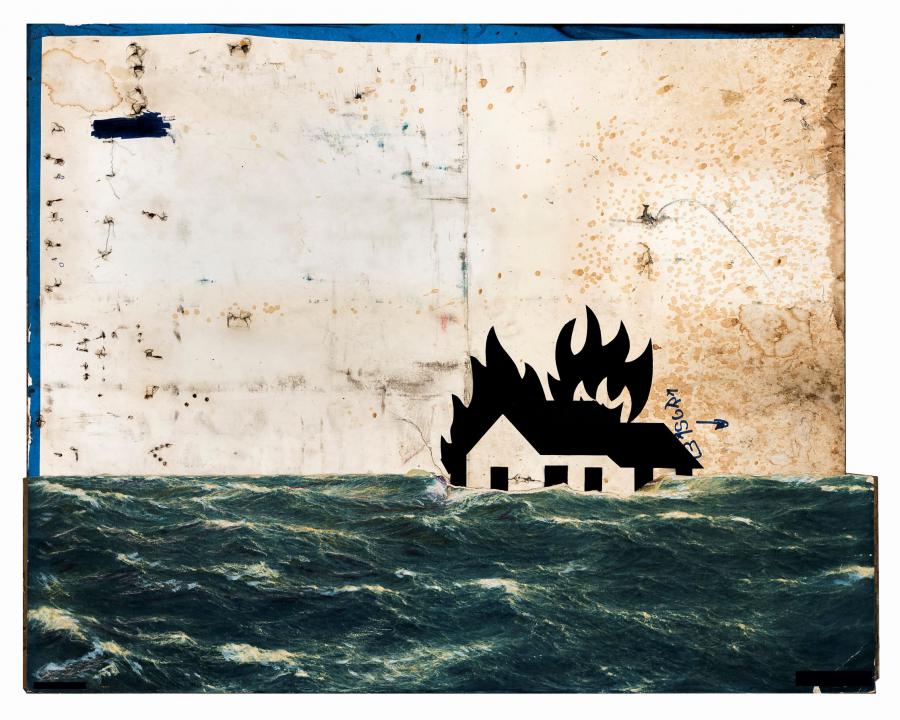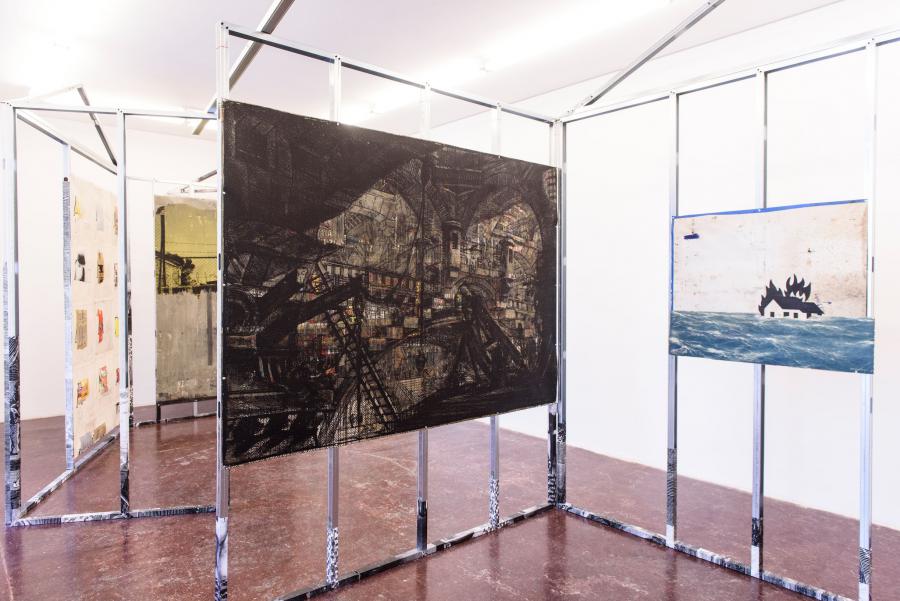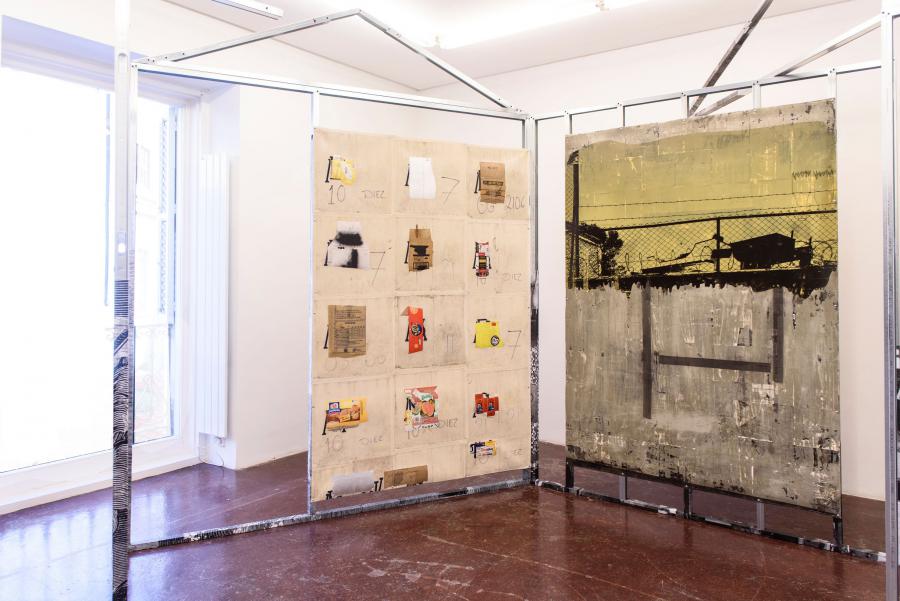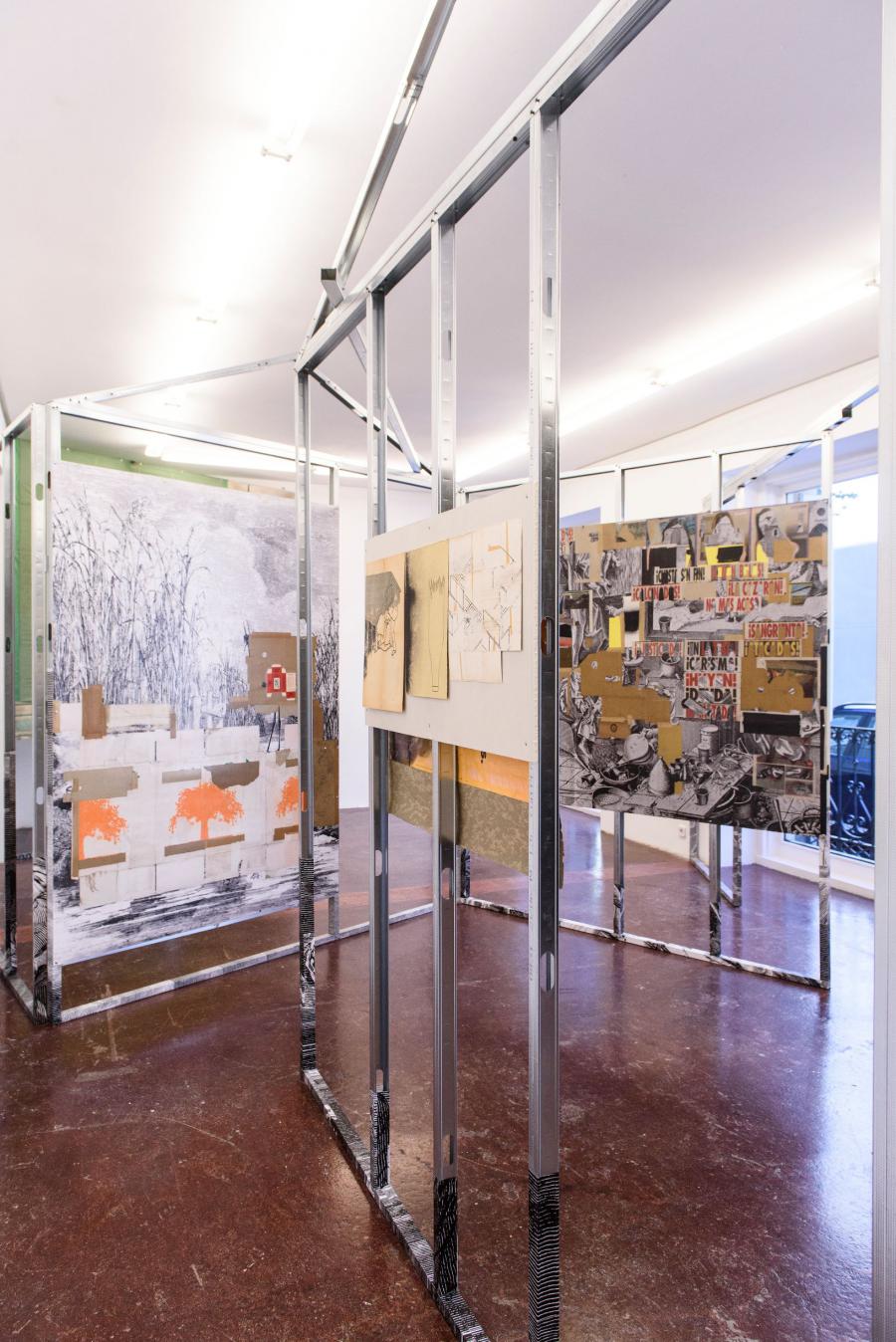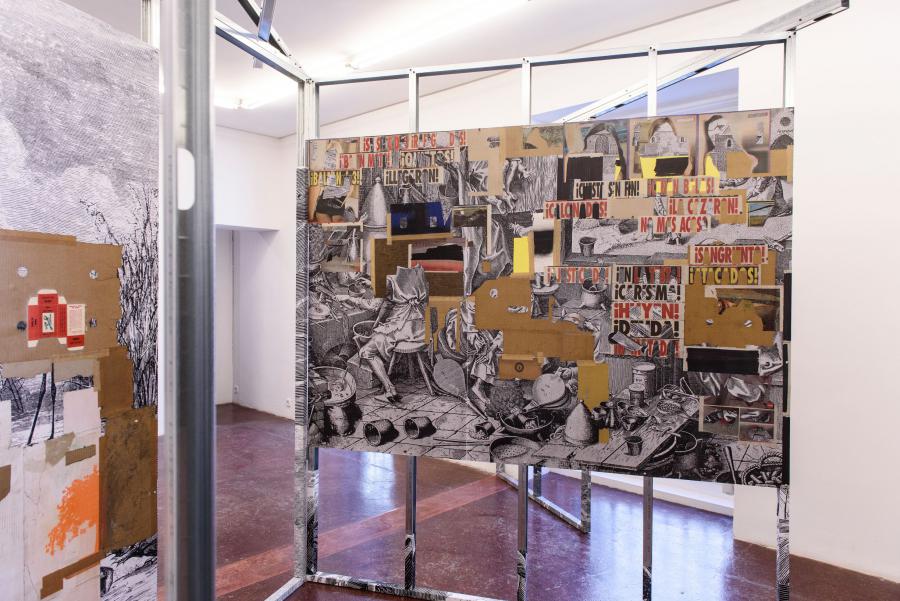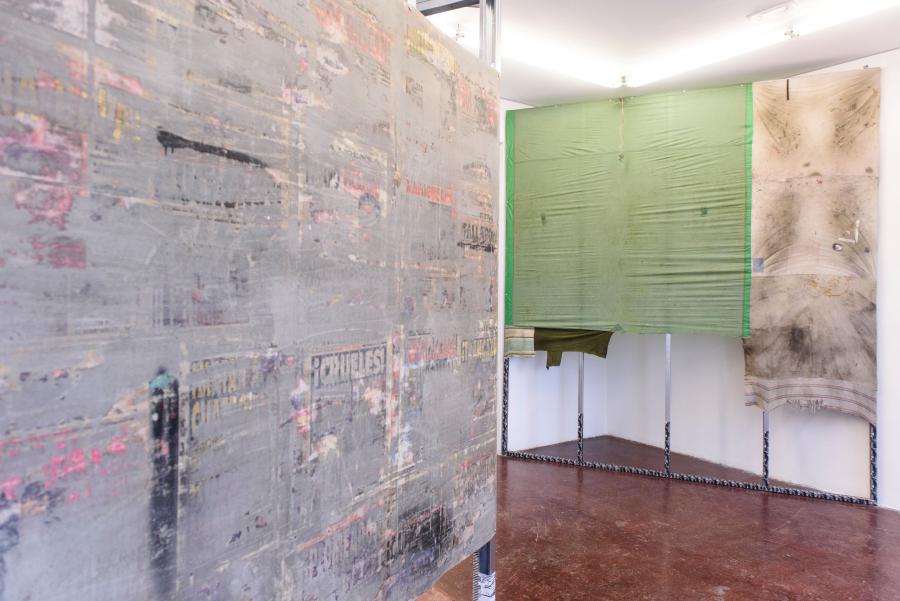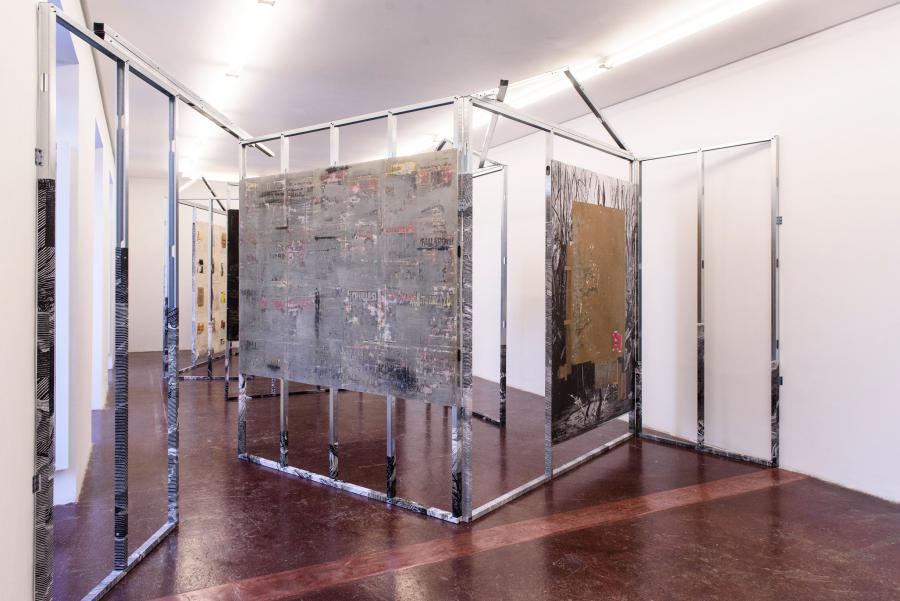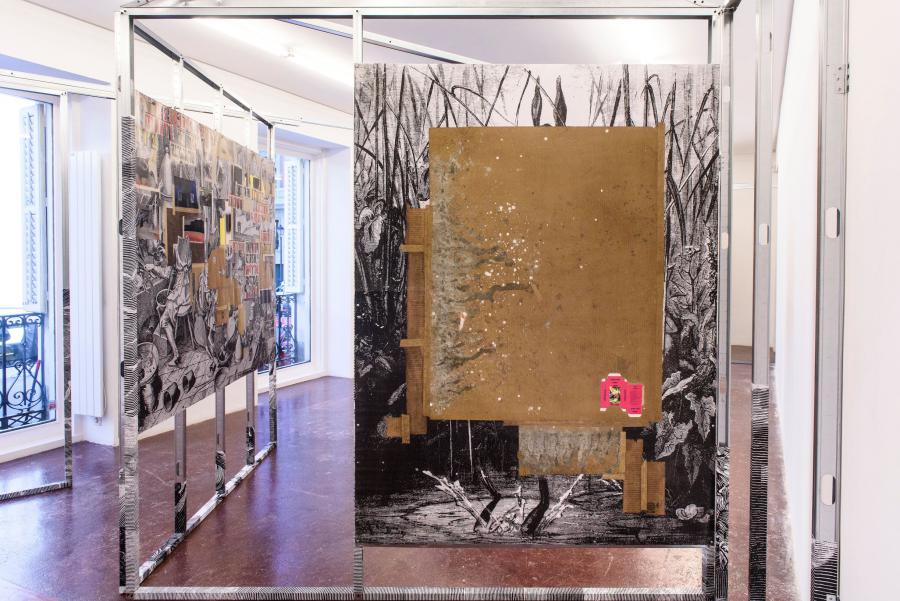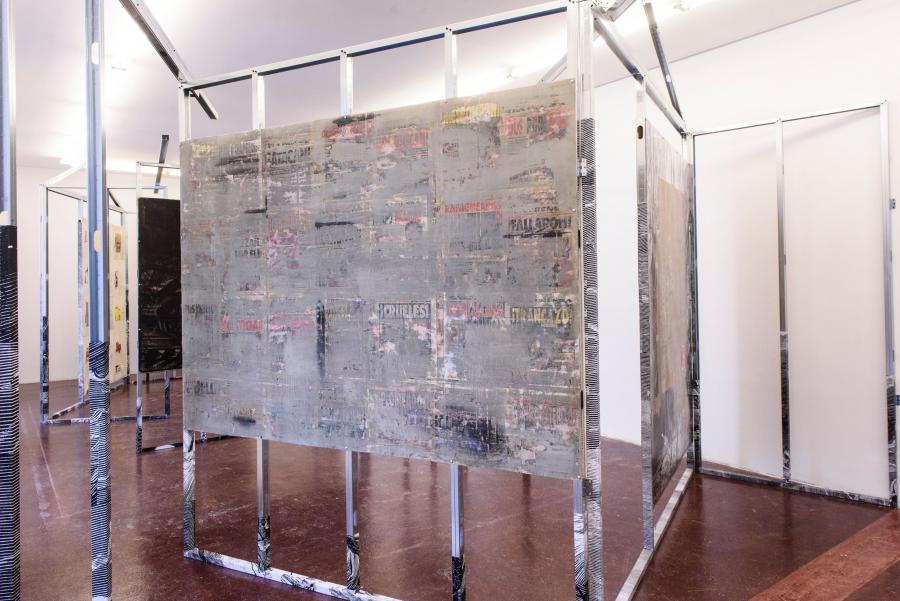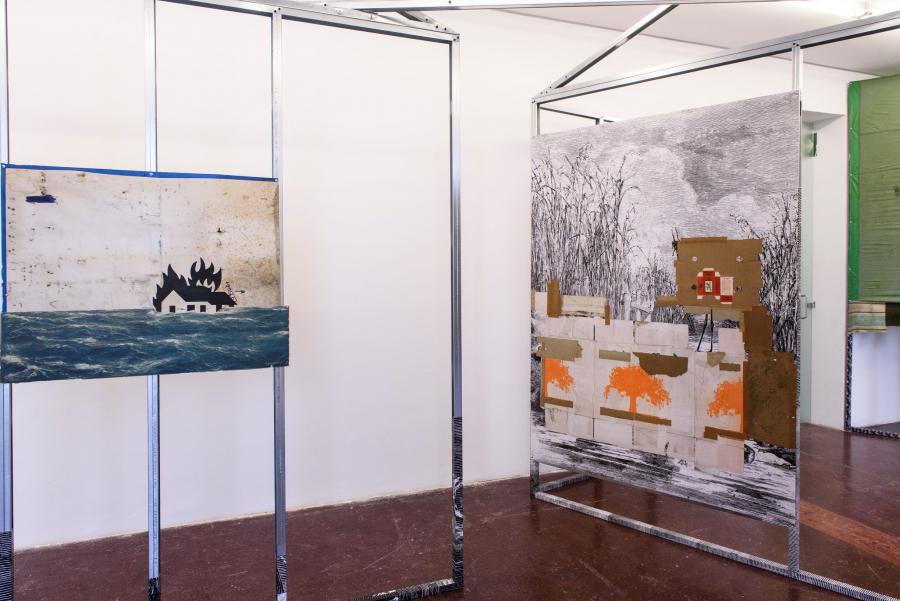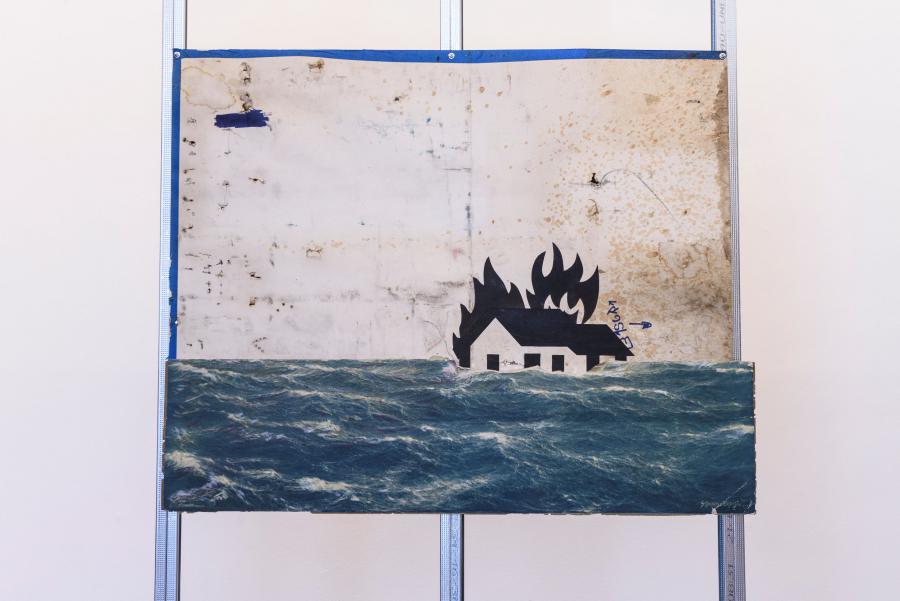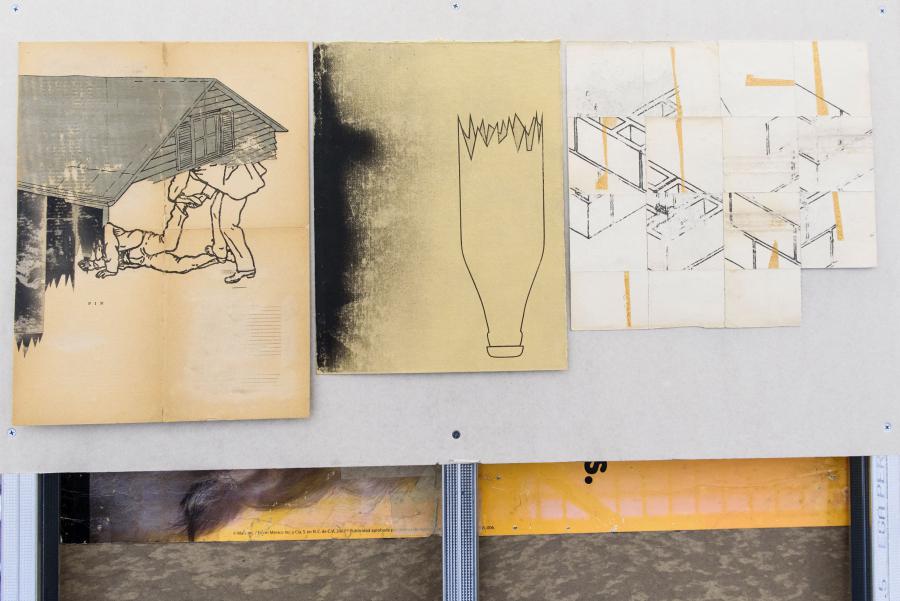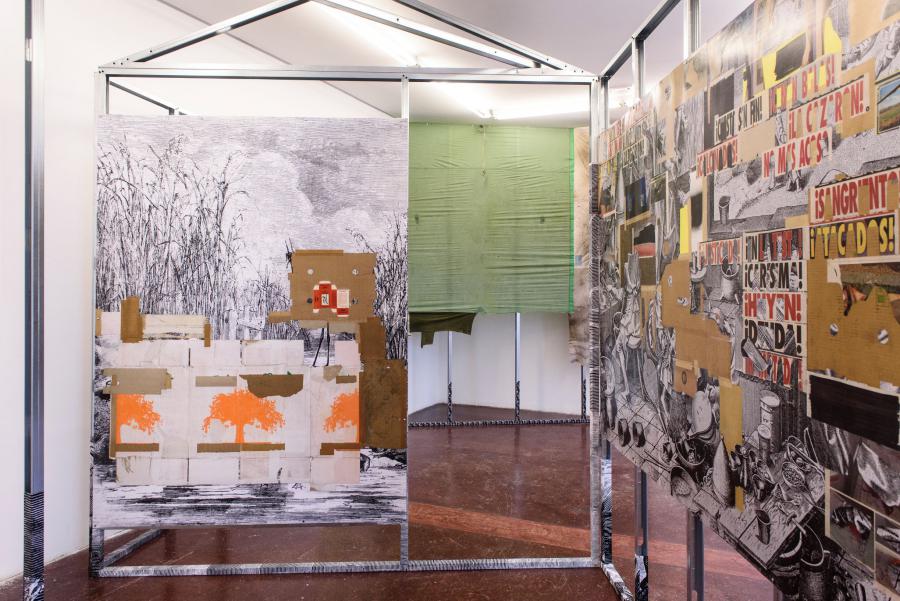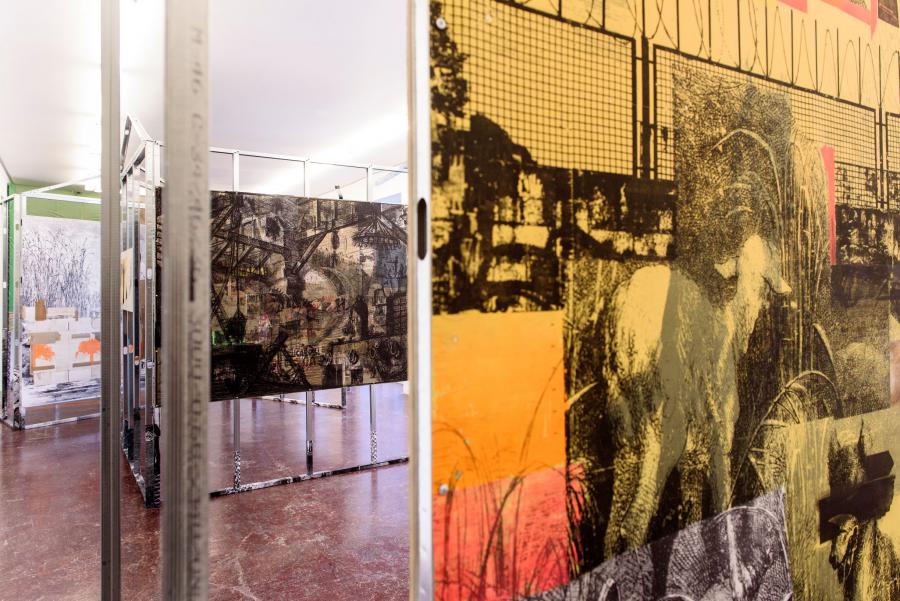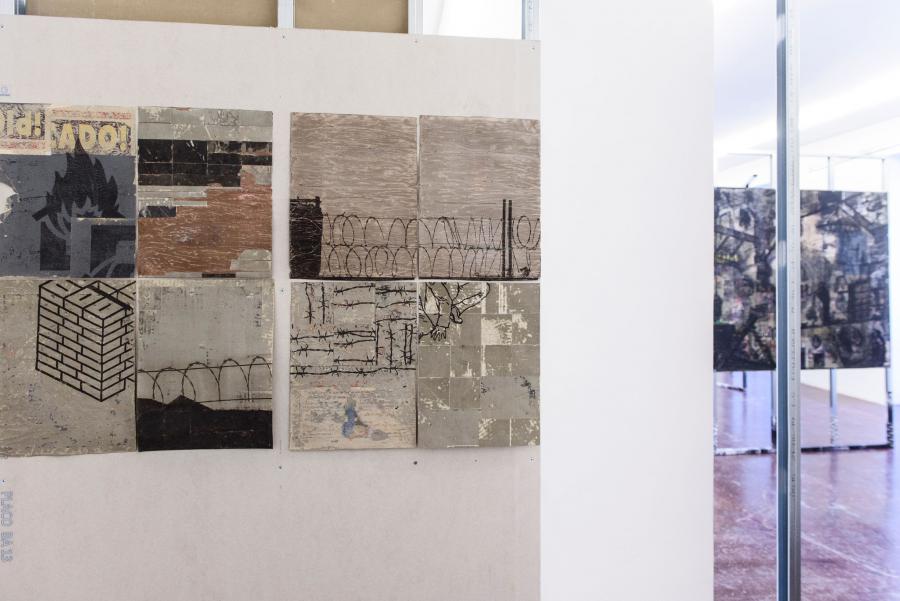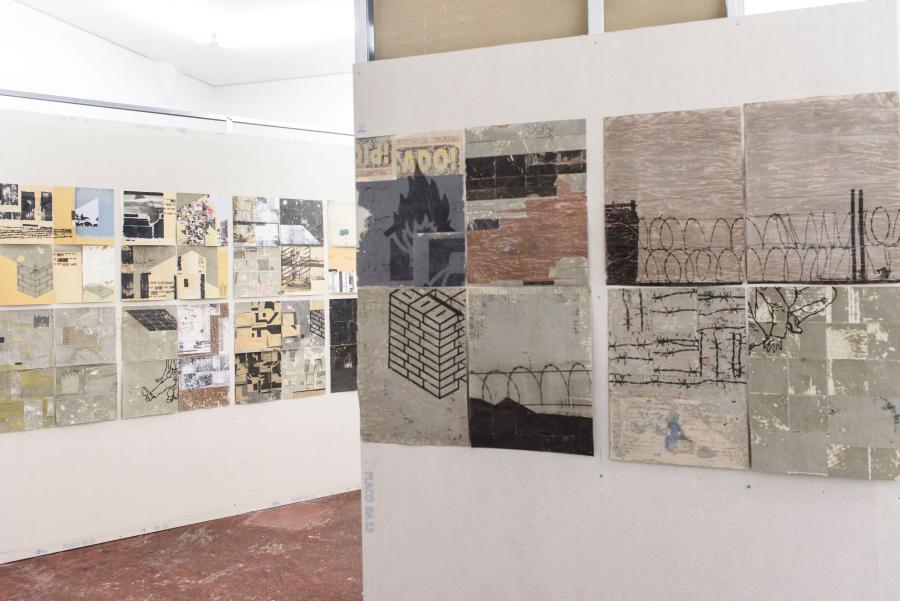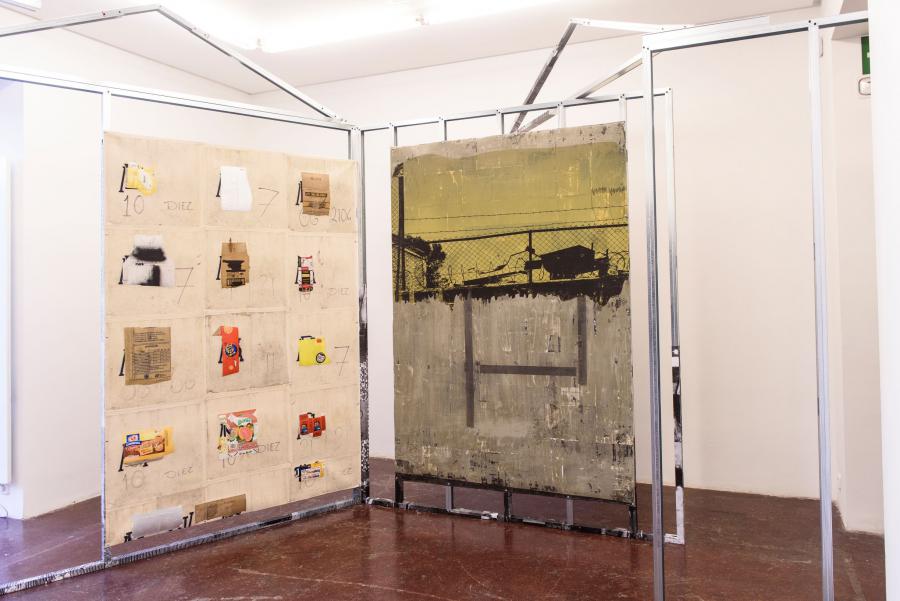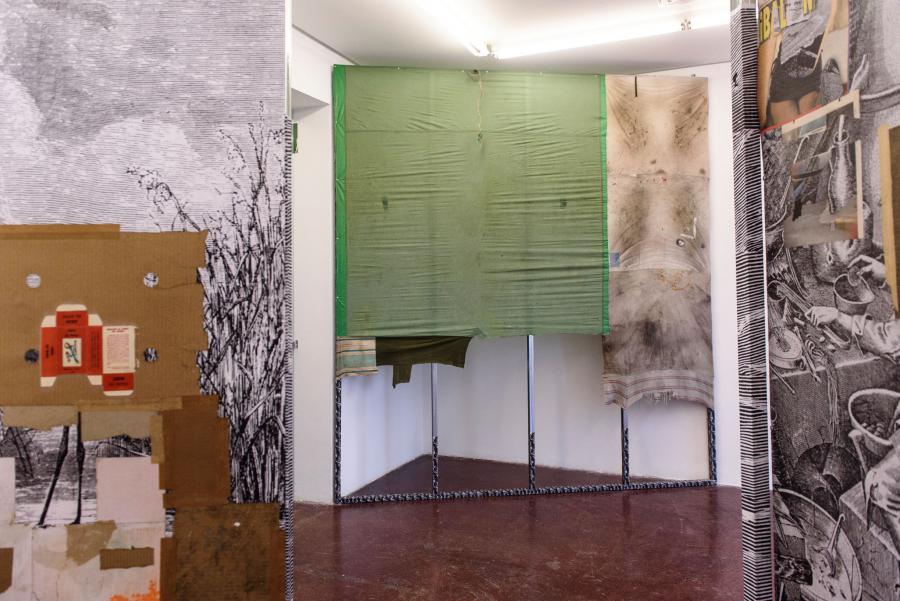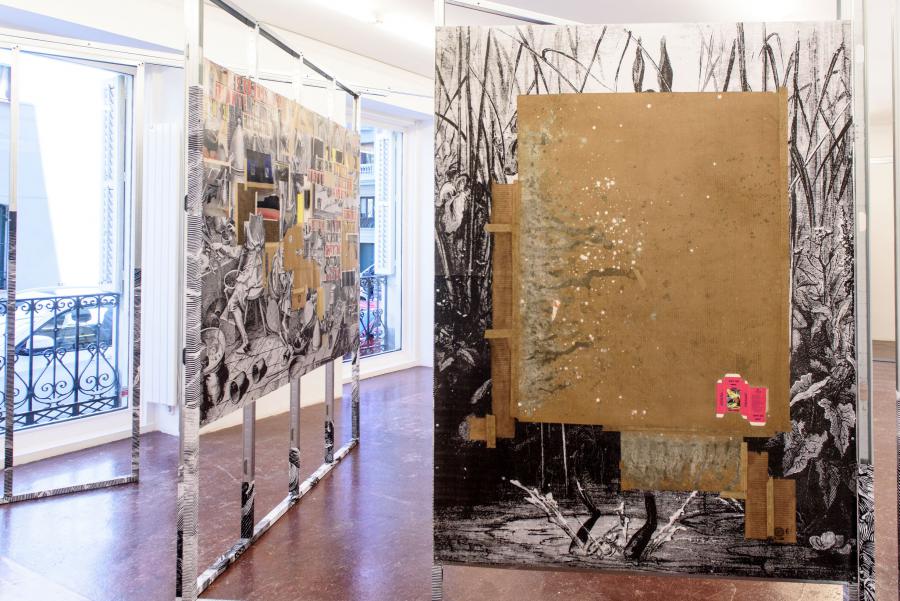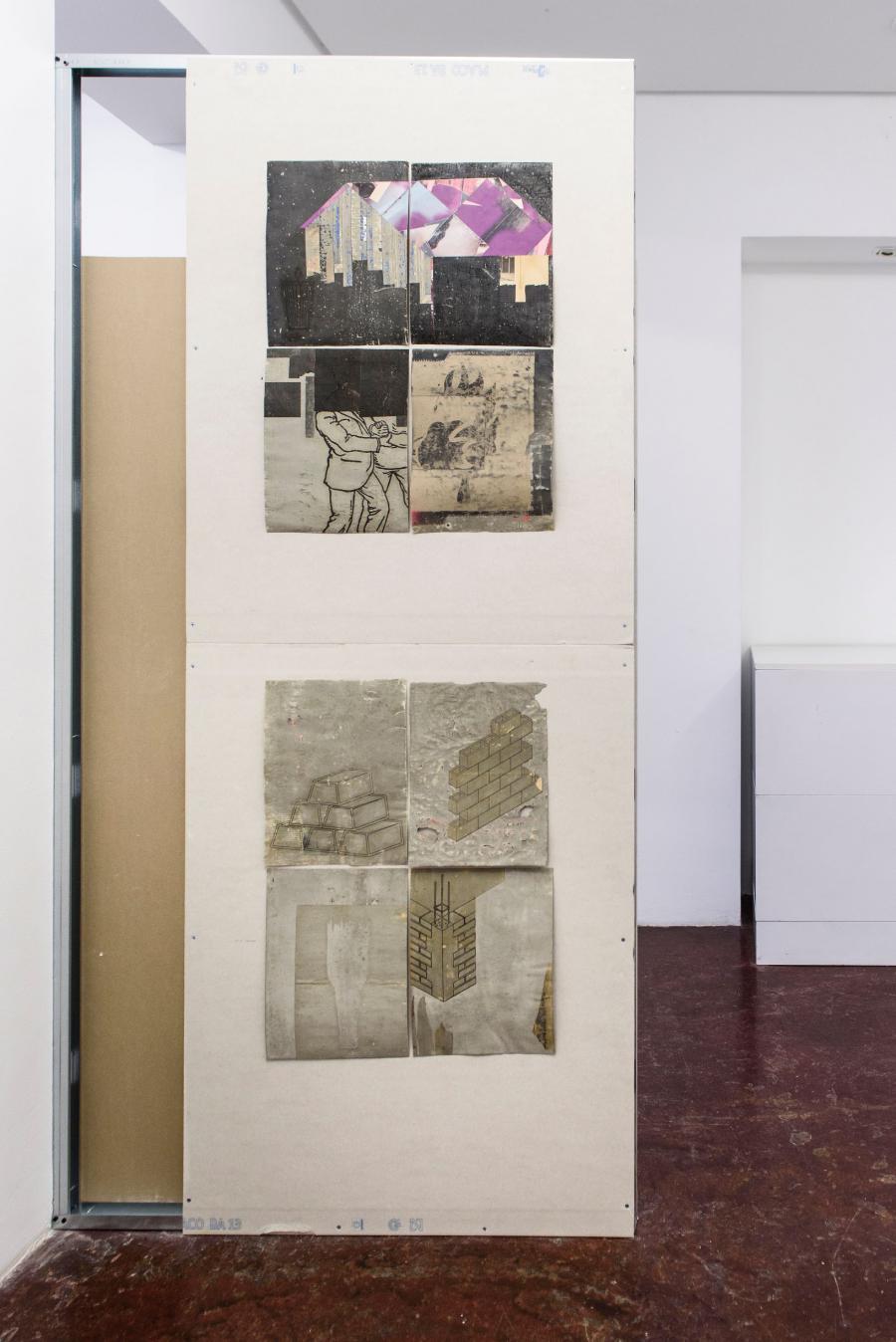Moris. Allá afuera hay una bala para todos.
Allá afuera hay una bala para todos is Moris’ second exhibition at NF/NIEVES FERNÁNDEZ. The artist participated in the São Paulo and Havana Biennials, as well as in group shows at the JUMEX Foundation in Mexico City, Fontanals Cisneros Foundation in Miami, ARTIUM in Vitoria, MUSAC in León and the Museum of Contemporary Art in San Diego. Also, he has had solo shows at the Museum of Contemporary Art in Los Angeles, the Museo Carrillo Gil and Sala Siqueiros, both in Mexico City, and the Stadtgalerie Saarbrücken, among others.
His works can be found in the collections of MoMA New York, Pérez Art Museum Miami, JUMEX Foundation, CIFO Foundation, ARTIUM, MOCA Los Angeles, Museo Amparo in Puebla, Museo de Arte Moderno in Mexico City, Museum of Contemporary Art San Diego, or the Isabel and Agustín Coppel Collection in Mexico City..
“We suppress the stage and the hall, which are replaced by a sort of single space, without separations or walls of any sort, that concentrates the actual theater of action […] by the fact that the audience, placed in the middle of the action, is involved and cleaved by it”. First Manifesto for a Theatre of Cruelty, Antonin Artaud.
It is common belief that the artist and the audience are not equals. That the art upholds an exhibition and that the viewer activates the whole mechanism. That the gallery exists to exhibit the works and that people visit the space to maybe leave enlightened, doubtful, moved. Moris entails factors of different natures to such equation from the concept and the production of what is exhibited, even throughout the gesture of transferring everything from one country to another, its respective economic and spatial constraints, the impossibility that turns feasible the construction that it pretends and the deconstruction that ties the argument by which the installations are links to a route of stakes in an empty host that is ultimately a parenthesis and a reflector for a short while. The art, supposedly, must be something and few of us are the ones who learn (by unlearning), from the absence of choice to be artists, that the art must not be art, but rather language, singularity and incident. The art produced under such conditions would be similar to a cartridges’ factory, not by its mass or its unstoppable process line, but in its specificity, in its raw power: each bullet will be a direct contact with a target, with a type of flesh, with some sort of death.
In a certain narrative, as if it was some of the fables taken by Moris to his prints, one could imagine that wherever this cartridge is shot from, the bullet shall hit, infallibly, the observer. Such certainty of this moment is evidenced by the percussion, the scale of order in space and the shape and function of the individual within the invisible. The spectator stems from the same origins as the art, with the only exception that his storyline is the platform from which the art argues. The main character, here and now, is used by the language to perform something unfolding in the eyes of the audience, under a perspective without closing or beginning, but rather latent moments that occur when they are found within its margins. The outside is the reverse side of the place, in which the creator disappears and, in his absence, the visitor emerges and produces the emerging of the artwork, surrounded with opacity, immersed in its thickness, from this counter-sight that conduces its transgressor act towards where the space – until then – begins to exist.
What is built inside the gallery is, paradoxically, the fiction of a construction, the convergence of forces, isolated in the endlessness. It is a scene, but also the edge that limits and make possible the existence of that other side that we do not need to see but rather sense. If we call proximity to this level where things happen, the events of the journey may be then placed as remoteness. If we call the visions that compete as findings, the installations may be called mysteries. If we categorize every intertextual relation of the exhibition, we enable every image to be transformation, a mirror. To the language of fiction, in Foucault’s words, it is required a symmetrical conversion. The language must stop being the power that relentlessly produces and makes images shine, and become, on the contrary, the power that unleashes them. On the other hand, Artaud would classify this series of hostile actions in everyday life as the plague of which societies are victims and part, and whose hustle and bustle hides the hopeless rawness of possessing a home that is merely a transit station, for the time is quickly consumed in the work centers, the fantasy of prosperity.
As a token for false security and certainty, we raise a graphic installation of that place that is redesigned over and over again, worthlessly, because whenever slowed the meaning, death would find us. After all, perhaps this is what we call home: our imagined comfort in the world, and our imagined world, sheltered from death.
Fernando Carabajal


